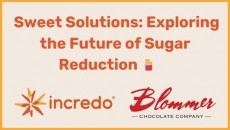FSANZ approves higher use of steviol glycosides in some products
FSANZ approved the use of steviol glycosides as sweeteners in October 2008, as long as the preparation is 95 per cent the nine named steviol glycosides, in accordance with the FAO/WHO JECFA specifications. It set out certain limits for different food and beverage categories.
However in October 2009 Cargill made an application to raise the permitted levels in 2009, arguing that higher usage would enable more pleasant tasting products. The JECFA specification gives food formulators some leeway to adjust the levels of different steviol glycosides to obtain the most suitable taste balance.
Other specifications, such as the initial FDA GRAS notifications in the US and the current French requirement for 97 per cent rabausioside A purity, are more restrictive.
Following one round of consultation, FSANZ has now given the green light for maximum permitted levels in ice cream, water based beverages, brewed soft drinks, formulated beverages and flavoured soy beverages up to 200 mg/kg.
In plain soy beverages steviol glycosides can be used up to 100 mg/kg.
Pre-market modelling
An acceptable daily intake (ADI) of 0–4 mg/kg bodyweight, expressed as steviol equivalents,
was established by FSANZ in 2008, JECFA in 2009 and EFSA in 2010.
Prior to granting approval to Cargill’s application, FSANZ carried out a risk assessment to consider the technological justification and safety issues, including consideration of a dietary exposure assessment.
The dietary exposure assessment modelled three scenarios: a 30 per cent market share scenario and two ‘brand loyal’ scenarios that assumed brand loyalty for water-based flavoured beverages and flavoured milk products (including yoghurt).
“These are broadly protective assumptions that are likely to lead to a considerable overestimation of dietary exposure,” said FSANZ.























